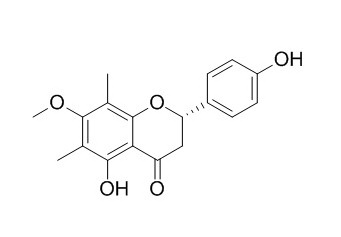Angophorol
Angophorol exerts potential anticancer activity through growth inhibition and apoptosis in K562 cells.
Inquire / Order:
manager@chemfaces.com
Technical Inquiries:
service@chemfaces.com
Tel:
+86-27-84237783
Fax:
+86-27-84254680
Address:
1 Building, No. 83, CheCheng Rd., Wuhan Economic and Technological Development Zone, Wuhan, Hubei 430056, PRC
Providing storage is as stated on the product vial and the vial is kept tightly sealed, the product can be stored for up to
24 months(2-8C).
Wherever possible, you should prepare and use solutions on the same day. However, if you need to make up stock solutions in advance, we recommend that you store the solution as aliquots in tightly sealed vials at -20C. Generally, these will be useable for up to two weeks. Before use, and prior to opening the vial we recommend that you allow your product to equilibrate to room temperature for at least 1 hour.
Need more advice on solubility, usage and handling? Please email to: service@chemfaces.com
The packaging of the product may have turned upside down during transportation, resulting in the natural compounds adhering to the neck or cap of the vial. take the vial out of its packaging and gently shake to let the compounds fall to the bottom of the vial. for liquid products, centrifuge at 200-500 RPM to gather the liquid at the bottom of the vial. try to avoid loss or contamination during handling.
J Cell Mol Med.2018, 22(9):4236-4242
Braz J Med Biol Res.2021, 54(12):e11183.
Food Research International2023, 113792.
APMIS.2019, 127(10):688-695
Cancers (Basel).2021, 13(6):1432.
Biomolecules.2019, 9(11):E696
Biomed Pharmacother.2019, 116:108987
Int Immunopharmacol.2023, 125:111175.
J Pharmacopuncture.2023, 26(4):357-365.
Phytomedicine.2022, 99:153997.
Related and Featured Products
Planta Medica, 2013,79 (5):55.
Therapeutic Efficacy of Phenolic Compounds from Micnia prasina. in Acute Lymphoblastic Leukemia.[Reference:
WebLink]
METHODS AND RESULTS:
Three flavonones A, B, and C, were isolated from the leaves and stem of Miconia prasina. The flavonones were characterized structurally as (-)-farrerol (A), Angophorol (B) and desmethoxymatteucinol (C), respectively. Their structures were elucidated by spectroscopic analysis including HRMS, 1D, and 2D NMR. The anti-leukemia effect of the flavonones constituents of the Miconia prasina leaves was also examined in vitro, where the result showed that flavonones A, B and C exert potential anticancer activity through growth inhibition and apoptosis in K562 cells.
CONCLUSIONS:
This is the first report for these compounds being isolated from Miconia prasina, and it is the first time to measure their anti-leukemia activity against two human leukemia cell lines, HL60 and K562, after a 48h exposure.



